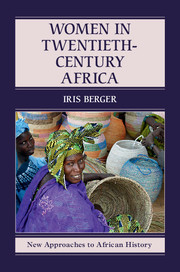Book contents
- Frontmatter
- Dedication
- Contents
- LIST OF ILLUSTRATIONS
- LIST OF MAPS
- PREFACE
- Map
- Introduction
- 1 Colonizing African families
- 2 Confrontation and adaptation
- 3 Domesticity and modernization
- 4 Mothers of nationalism
- 5 The struggle continues
- 6 “Messengers of a new design”: marriage, family, and sexuality
- 7 Women's rights: the second decolonization?
- 8 Empowerment and inequality in a new global age
- Contradictions and challenges
- REFERENCES AND FURTHER READING
- INDEX
- Frontmatter
- Dedication
- Contents
- LIST OF ILLUSTRATIONS
- LIST OF MAPS
- PREFACE
- Map
- Introduction
- 1 Colonizing African families
- 2 Confrontation and adaptation
- 3 Domesticity and modernization
- 4 Mothers of nationalism
- 5 The struggle continues
- 6 “Messengers of a new design”: marriage, family, and sexuality
- 7 Women's rights: the second decolonization?
- 8 Empowerment and inequality in a new global age
- Contradictions and challenges
- REFERENCES AND FURTHER READING
- INDEX
Summary
This book has its origins in the classrooms of the Machakos Girls High School in Kenya, where I taught history and English in the mid 1960s. Just out of college and scarcely older than some of the students in my classes, I began meeting periodically with a group of girls to talk about their personal lives and plans for the future. Perhaps prompted by the pregnancy of one student, who was allowed to remain in school, but had to live apart from her classmates in the small house designed for domestic science instruction, our discussions turned to marriage, sexuality, and childbearing. Over the years, all I recalled from these gatherings was the insistence of many students that they were eager to have children, but were skeptical about being married. I am deeply grateful to one of them, Maryam Murbe Solola, for her persistence in tracing me nearly four decades later. Our emotional meeting rekindled memories of the school and of a formative period in my own life.
My relationships with these lively and engaging young women contributed to my interest in African women's history. Although I was assigned to teach African history, the syllabus for the national examination at the time focused primarily on the activities of Europeans on the continent; women were never mentioned. As in the United States and Europe, research on the history of women in Africa developed only during the late 1960s as feminist scholars and activists began intensive efforts to “restore women to history.” Over time, the field expanded from a concentration on economics and politics to include marriage, childbirth, sexualities, and the relationships between women and men, issues that this book will explore.
Rather than a chronological narrative that looks at African women's history region by region, I use case studies to analyze the interactions between personal and public life across the twentieth century, primarily in sub-Saharan Africa. North African countries shared the political challenges of European colonization, nationalist resistance, and the difficulties of creating a new postcolonial legal and political order. But by the early twentieth century higher levels of industrialization and commercialized agriculture, the erosion of small-scale peasant economies, and a shared history and culture made the lives of north African women different in significant respects from those of their neighbors to the south.
- Type
- Chapter
- Information
- Women in Twentieth-Century Africa , pp. xiv - xviPublisher: Cambridge University PressPrint publication year: 2016

